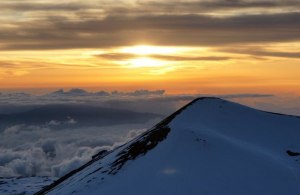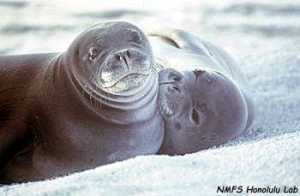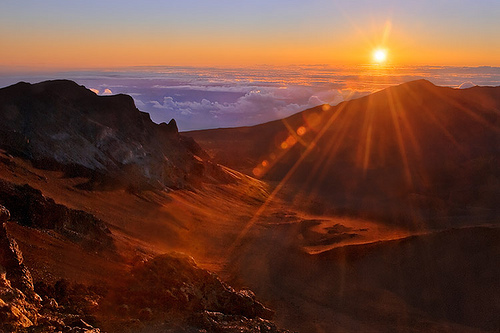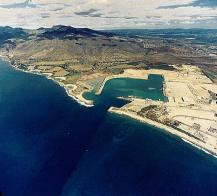Blog
News, updates, finds, stories, and tidbits from staff and community members at KAHEA. Got something to share? Email us at: kahea-alliance@hawaii.rr.com.
- Authorize Department of Land and Natural Resources to issue long-term residential leases to Kahana residents;
- Establish planning councils to develop a park Master Plan; and
- Establish a 2-year moritorium on evictions of Kahana valley residents.
HB 1522: Kahana Residents Still Fighting to Retain Their Homes
From: Andrea
Kahana residents have not ceased their tireless fight to stay in their homes. Since their homeland was condemned as a state park in the ’60s, the people of Kahana have had to battle the State of Hawaii to stay in their homes.
And, now, after the State found illegal the law passed in ’93 to allow long-term leases for pre-existing residents in Kahana State Park, legislation has been proposed to ameliorate this unsettling situation for now.
House Bill 1552 presented Kahana residents an interim solution from being forced to leave their homes. Public process gave them a way to voice their interests within the decision-making arena. Reflecting Kahana residents’ input, the bill would help Kahana residents in the following ways:
But, now, Governor Lingle has voiced her intent to veto the bill, apparently under the guise of prohibiting illegal activities in Kahana. If that’s the case, go after the illegal activities as the government would do so anywhere else! The State should not perpetuate the suffering of long-time Kahana residents who are not participating in illegal activities because some residents are breaking the law there.
Want to support Kahana residents in their fight to protect their homes?
Oppose Governor Lingle’s intent to veto HB 1522:
Wednesday, July 8, 11 a.m.
Demonstration at the State Capitol
TMT on Mauna Kea Public Hearing- You Can't Sell Us TMT with Turkey Rolls
From Melissa:
Walking into the Farrington High School cafeteria for the Mauna Kea Thirty Meter Telescope (TMT) hearing for the draft EIS, was like walking into a world of glossy posters and seductive color schemes. TMT staff were present in great numbers, anxiously awaiting questions from the  community. More of a sales pitch at the beginning than a hearing, the TMT guys tried to entice the crowd with turkey rolls, brownie bites and promises of community benefit and higher education packages that sound more beneficial to the community than what they really offer.
community. More of a sales pitch at the beginning than a hearing, the TMT guys tried to entice the crowd with turkey rolls, brownie bites and promises of community benefit and higher education packages that sound more beneficial to the community than what they really offer.
From cultural education programs for the employees of TMT to a zero discharge wastewater plan for the facility, the mitigation measures brought forth did not seem to address the legitimate concerns of the Hawaiian people. Mitigation measures for the decimation of a cultural site of extreme importance, not to mention the irreparable damage the TMT would cause to the environment, were not attended to because these two issues are inevitable and irreversible.
The oral testimonies given were fairly balanced between support and opposition. Those in favor of the TMT went first, followed by those in opposition. TMT supporters mainly argued that the monetary packages offered to the community would be a godsend, and that Hawaii should be on the forefront of astronomical advances.
Our Program Director, Marti (who blew us away) and those in opposition brought up several interesting and valid points. The main issues brought up were that a federal EIS is required because TMT is funded by federal money, a permit for TMT will not be issued as it is in a conservation district, TMT doesn’t show a comprehensive management plan, the Board of Land and Natural Resources should be reviewing the EIS because TMT would be in a conservation district, students shouldn’t have to give up a cultural site just to receive chump change (education package), and the fact that the site has great environmental and cultural significance.
Overall, the hearing was informative, and those in opposition got to voice their opinion to the people that are carrying out the project, who are fully aware their work will devastate the land and decimate a culturally significant site. Whether or not TMT will actually be built is not yet known (our fingers crossed are it will fall through).
To learn more about this issue please visit the following site:
If you wish to voice your opinion, please click on the following link to submit testimony:
Defend Mauna Kea’s Last Pristine Plateau
Shrug it off or contemplate security on the ground level?
From: Andrea
The article says Hawaiians are shrugging off the North Korean missile threat.
http://www.nytimes.com/2009/06/23/us/23hawaii.html?ref=americas
After all, Hawaiians are accustomed to the various threats and dangers of inhabiting the Planet’s most isolated archipelago. We are out here far from quick and convenient aid from the mainland.
But, perhaps, this threat should be an opportunity to reconsider how secure and independent Hawaii truly is, out here in the middle of the Pacific. While it may not be time to start worrying about missiles and the universe of possible terroristic threats, which may be unstoppable on a community level, the time is ripe to consider security the people of Hawaii can control.
For instance, food security is something as tangible as dirt in your hands and food in your belly. Obvious to everyone who buys groceries around here, a huge amount of food sold in stores is imported, reflected by the price. The exact percentage of imported food may be debatable, but the need for more food production here in Hawaii is undebatable.
What’s an easy way to improve food security here in Hawaii? Support local farmers markets! For instance:
Kapiolani Community College Farmers Market
4303 Diamond Head Road
Honolulu, HI 96805
Saturdays, 7:30 a.m. – 11 a.m.
For more info, see:
The EPA Just Doin' Their Job...
From Melissa:
The Environmental Protection Agency gets on the Department of Transportation’s Harbor division to clean up their act. It’s a start, thanks guys.
The U.S. Environmental Protection Agency said today it recently ordered the state Department of Transportation’s Harbors Division to comply with federal Clean Water Act stormwater regulations at Honolulu and Kalaeloa-Barbers Point Harbors.
Fuel, oil and debris carried by stormwater from the Harbors Division and tenant facilities discharge directly into harbor waters and through municipal storm drains running to harbor waters.
To read the full article click here
Monk Seals Compete with Fishing Industry for Food
From Melissa:
Much is being done in the way of critical habitat designation to ensure the survival of the Hawaiian monk seal. Is it enough though? These precious creatures inhabit the Northwest Hawaiian Islands (NWHI) and are at high risk of becoming extinct due to death caused by starvation, predation, males accidentally killing females in the mating process and entanglement in fishing gear.
enough though? These precious creatures inhabit the Northwest Hawaiian Islands (NWHI) and are at high risk of becoming extinct due to death caused by starvation, predation, males accidentally killing females in the mating process and entanglement in fishing gear.
NOAA decided last year the Caribbean monk seals had become extinct, and has observed that the Hawaiian breed has reached a population of about 1,200, declining by abut 4 percent a year during this decade. Federal Judge Samuel King noted nine years ago that it was likely that the fishing industry “contributes to the starvation of the monk seals,” but fisheries strongly deny it.
For whatever reason, the seals apparently are not getting enough to eat. Fitted with compact video cameras in a National Geographic project from 1995 to 2002, they were seen dining on a wide variety of crustaceans, squid, octopus and fish, competing for food with large and hungry ulua.
Should more restrictions and rules be enforced in the critical habitat of the Hawaiian monk seal? As of today, eight fishing boats based out of Honolulu are permitted to fish in certain areas of the NWHI, one of which, very recently was caught fishing in a restricted area. These vessels catch approximately half of the locally landed bottomfish in Hawaii. By revoking these permits, the fish populations will likely replenish, leading to more food for the monk seals thus less starvation. Could this be the way to go to further protect the monk seals or would it just enrage the fishing industry?
To read the full article follow this link:
To learn more about this issue please follow the link provided:
Action Alert: Unite to Save the Scared Summits!
 Plans for major construction in the sensitive ecosystems of our most sacred summits continue to push forward, despite significant opposition from the community. The University of Hawaii has filed two environmental impact statements — one for the world’s largest telescope in the world’s only tropical alpine desert, and another for a duplicative solar telescope in one of the most threatened national parks in the U.S. Both of these projects can be built in less sensitive areas.
Plans for major construction in the sensitive ecosystems of our most sacred summits continue to push forward, despite significant opposition from the community. The University of Hawaii has filed two environmental impact statements — one for the world’s largest telescope in the world’s only tropical alpine desert, and another for a duplicative solar telescope in one of the most threatened national parks in the U.S. Both of these projects can be built in less sensitive areas.
Though both summits are protected as conservation districts, where the law expressly discourages construction, the University refuses to compromise, insisting that these giant, intrusive structures be built where they will cause the most harm.
Don’t let good science be used to justify unnecessary ecological destruction and cultural disrespect. Take action now to defend our sacred, fragile summits.
1)
Protect Haleakala — the House of the Sun — from another, unnecessary solar telescope
2) Defend the Sacred Summit of Mauna Kea from the World’s Largest Telescope
Public hearings on the proposal to build the world’s largest telescope on Mauna Kea are being held now. All meetings are 5 to 8 p.m., with an open house in the beginning, followed by formal presentations, and then comments from the public.
Public Hearings on the New Mauna Kea Telescope Proposal
June 16 (Tuesday) Waimea – Waimea Elementary School Cafeteria
June 17 (Wednesday) Hilo – Hilo High School Cafeteria
June 18 (Thursday) Puna – Pahoa High School Cafeteria
June 22 (Monday) Ka’u – Ka’u High/Pahala Elementary School Cafeteria
June 23 (Tuesday) Hawi – Kohala Cultural Center
June 24 (Wednesday) Kona – Kealakehe Elementary School Cafeteria
June 25 (Thursday) Honolulu – Farrington High School Cafeteria
The Draft EIS is available on the Project website – www.TMT-HawaiiEIS.org – and hard copies can be found at public libraries throughout Hawaii.
Get action alerts like these sent directly to your inbox by signing up with KAHEA’s action alert network at www.kahea.org.
We paid for what?!
From Melissa:
We, the taxpayers, paid city workers overtime to illegally dump cement into our precious Ma’ili’ili stream that supports native and endemic species. Guess what? Now we’re paying them to clean it up… illegally! C’mon City of Honolulu, really?! Check this out:







